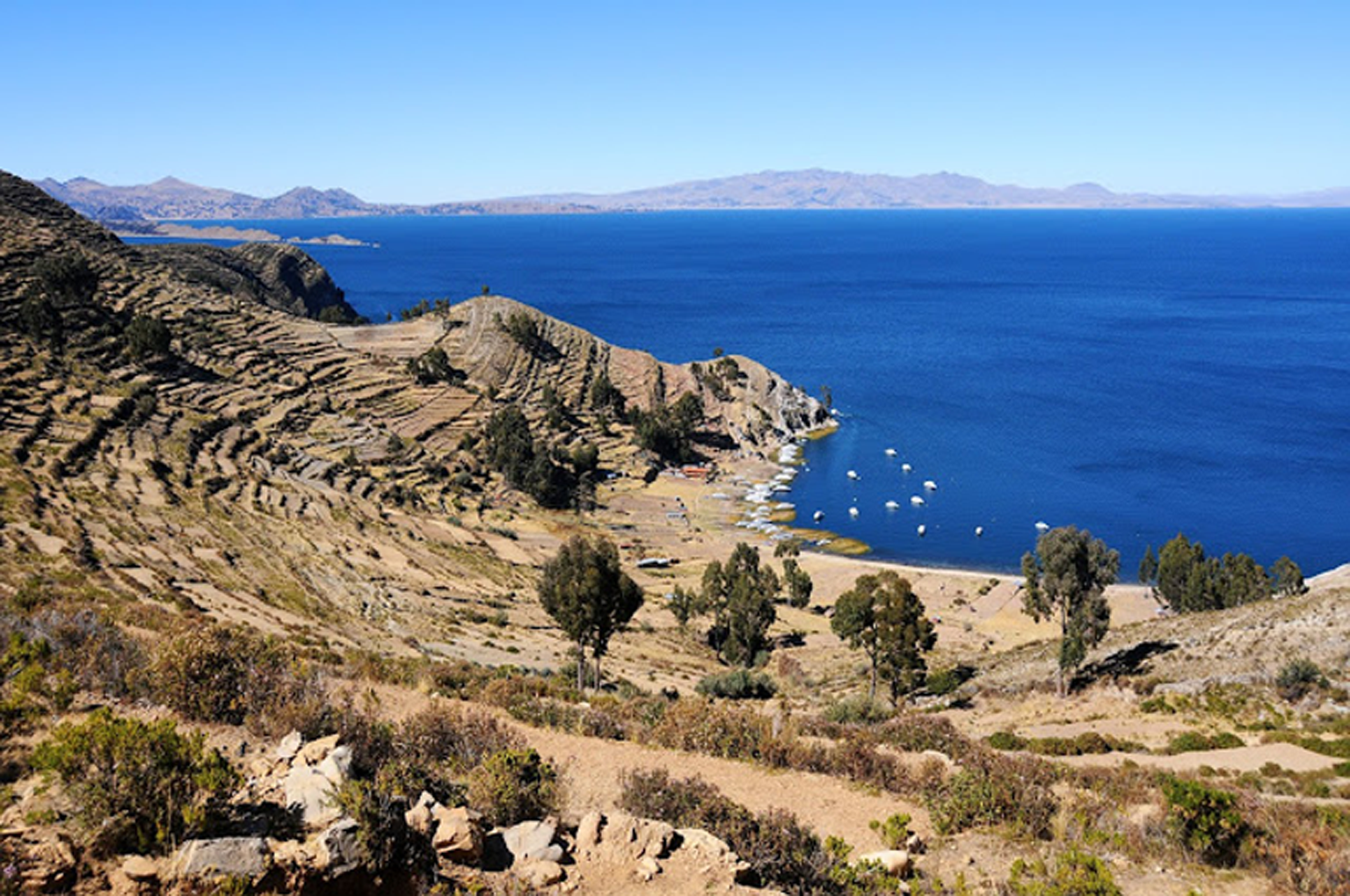- Posted by:
- anjci
- Under:
- Travel: Nordics
Continued from Northern Norway: The land of the midnight sun (I)
Narvik
The call of the oystercatcher still echoes in my ears as I travel to my next destination – the city of Narvik. Better known as the ice-free port for the iron ore deposits in Kiruna on the Swedish side of the border, Narvik is not exactly a magnet for travellers. Indeed, most backpackers on the bus are heading there merely to catch the connecting train to Sweden. It seems for a moment that I may be the only visitor staying in Narvik overnight.
Luckily, the first impression soon proves me wrong. Narvik’s architecture will certainly not win any prizes: completely destroyed during the WWII, the city has since been rebuilt hastily in a functionalist style. However, its location aside the vast Ofotfjorden compensates for the apparent lack of design, and the century-old railway cutting Narvik in half – to this day used to transport the famous iron ore – is charming in its special kind of way.
Even my foreign origin is not entirely out of place in quiet Narvik. Ten minutes after arriving, I am yet to meet a Norwegian person; on the contrary, Russian, Polish and Thai seem to be widely spoken by many overseas workers permanently living here.
The evening is approaching and one couldn’t possibly miss Narvik’s best midnight sun viewing spot – Narvikfjellet, a 1,200 m high mountain towering over the city. A cable car drops me halfway up, near a restaurant built so close to the edge that I dare not think of food. Past patches of unmelted snow and red skiing poles, I climb further up, settle on a flat rock and just watch. Orange rays of the glowing sun push their way through the clouds, reflecting off every surface around. It doesn’t take long before the midnight hour has passed and the new day is dawning – with not even a second in-between.














To the Swedish border and back
On my eighth morning in Norway, I wake up early to catch a train from Narvik to the Swedish border – the station appropriately named Riksgränsen (literally the Royal Border). For a 43 km journey, the Ofoten railway (Ofotbanen) that I embark on has a lot to offer. Parallel to the tracks runs a walking trail today popular with hikers but originally used by the navvies who built the line over a century ago. Nearly 50 tunnels and snow sheds dot the way from Narvik to the Swedish border; in fact, the border itself cryptically sits inside a tunnel, too.
Stunning views from the heights of over 400 meters is what the Ofoten railway owes its fame to. As yet another tunnel spits our train back into daylight, the Ofotfjorden reappears majestically on our left. On an overcast day, its blue – even more intense than what promotional images suggested – blends harmoniously with the rich green of the forests surrounding the tracks.








There is little to do in Riksgränsen, an off-season ski resort, and I return to Narvik to catch a bus to Tromsø. It is my second visit to Arctic Norway’s largest city after a Northern Lights pilgrimage earlier this year. In February, I found Tromsø generously covered in snow and barely lit by the low hanging sun. Thankfully, a spectacular Northern Lights display duly compensated for the lack of daylight.
This time it is the diametrically opposite natural phenomenon that awaits. From atop the Storsteinen mountain, I watch the midnight sun roll slowly along the horizon – as if hesitantly – before ultimately giving in and rising again. The new light is soon bathing splendidly in the Tromsøy Strait, a fisherman is grilling fresh salmon in the harbour, and hundreds of locals are toasting Tromsø’s celebrated nightlife in an outdoor bar. Never mind that it is exactly 1am and there is not a sign of darkness outside.







Hammerfest, the world’s northernmost “city”
Having travelled by ground transport and sea for over a week, I change the tactic and take one of the many short-distance flights connecting Northern Norway’s coastal towns. It is yet another beautiful day, and the stunning blue of the Arctic Ocean below drifts past in a flash. Forty minutes later, I reach Hammerfest – the town best known for claiming the title of the world’s northernmost despite its population of barely seven thousand.
Hammerfest’s tiny airport boasts a couple of meters of luggage belt and is indeed so central that I do not bother taking a taxi. Just outside the entrance, a reindeer is chewing on the grass phlegmatically in somebody’s backyard. I remember stories about these animals roaming freely around town in search of food and – while totally adored by the visitors – decidedly causing more of a nuisance to the locals.
The small Arctic town I had imagined deserted, Hammerfest looks surprisingly lively that Saturday. It turns out that my arrival is well timed with that of Hurtigruten; all of a sudden, German takes over as the dominant local language and the settlement’s only Narvesen is making its daily turnover on ice cream sales alone.
The buzz continues even after Hurtigruten is gone. Temperatures are soaring in the high +20s, and seeing the locals stretch out in the sun is a surreal experience. Nobody at home will ever believe this could happen at 70° north.
Besides taking in the weekend vibe of a provincial northern town, there is not much to do in Hammerfest; but I do not mind taking it easy. The Fuglenes peninsula at the other end of the bay – where several barbequing locals park themselves for a good couple of hours – is a great resting spot overlooking both the town centre and the faraway Melkøya island. Crowned by an oversized torch blowing gas-fired flames, Melkøya marks Hammerfest’s proximity to some of Norway’s largest offshore gas fields. An LNG terminal is being built there – humorously named Snow White (Snøhvit), it may just become the settlement’s best known landmark once completed.

















Nordkapp: Europe’s “extreme” point?
The end of my journey is near but another highlight is looming ahead: for I still haven’t reached Nordkapp, the alleged northernmost point of the European continent and the top attraction in this part of Norway.
It cannot be for nothing, however, that Nordkapp is also known as Europe’s northernmost rip-off. I pay a non-nominal fee to access the area adjacent to the edge of the world famous cape. The place is supposed to be well discovered by tourists – judging by the number of buses parked by the entrance, anyway – and I expect a major disappointment.
To add to my fears, the fog is so thick that I barely see beyond a stretched limb – let alone the much trumpeted sea view from Nordkapp’s 300m high cliff. It seems like we may never witness the beauty concealed by the shiver inducing mist covering every surface around.
I stare longingly into the white cloud where the sea is supposed to be. Did I just notice a change? A trembling path of sunlight emerges from the wall of fog, and our hopes are pleasantly revived. In just a matter of minutes the fog retreats, revealing generous blue overhead. The moment is so moving – and we observers so incredibly fortunate – that the air is soon filled by the sound of a spontaneous applause of the many hands whose midnight sun hopes had come true.
Now shining in its full glory, the view from Nordkapp defies any description. Some misty clouds continue to linger around; as one to my left clears away, I notice a stretch of land obviously further north than our viewing spot. It is Knivskjellodden: set in a location far less accessible than Nordkapp, it receives a mere fraction of its counterpart’s fame – despite, as it turns out, indeed being several degrees closer to the North Pole.








Final voyage to Kirkenes
The last leg of my journey is by sea. At the port of Honningsvåg, I board Vesterålen – another Hurtigruten ship – for a voyage to the line’s ultimate destination, the city of Kirkenes.
The next 19 hours onboard Vesterålen are an eerie experience. Every landmark we pass seems to carry a “northernmost something” title. The small village of Mehamn proudly proclaims itself Hurtigruten’s most northerly port – and an unassuming rock rising lonesomely out of the ocean turns out to be Nordkinn, yet another cape disputing the title of Europe’s northernmost. We are told to forget Nordkapp and Knivskjellodden: since the two sit on an island, neither can rightfully top mainland Europe, leaving Nordkinn the most legitimate candidate.
Hourlong, the rugged shores of northern Finnmark drift past. The hill sides are bare, the surrounding waters look bitterly cold and thousands of seabirds zoom noisily under the low hanging clouds. The climate in these latitudes is anything but balmy. It has been almost a fortnight since I said goodbye to the mildness of the British summer, and, with all my love for the North, I suddenly start longing for more reasonable temperatures.
Luckily, the end is near. Through ceaseless rain, our Vesterålen passes the ports of Vardø and Vadsø – both further east than even Istanbul itself – and embarks on the finishing line towards Kirkenes. A rusty vessel carrying a Russian flag is docked in the harbour (Norway’s large neighbour is just a few kilometers away), and, in an emotionless voice, the Hurtigruten announces an imminent end to our journey.
Five hours and a stopover in Oslo later, I will be back in London – continuing to sport Norwegian phrases, hearing seagulls everywhere, wondering why the nights are suddenly dark again – but, above all, counting the days until my next sunrise in the Land of the Midnight Sun.



















View the photos from my trip to Northern Norway on Flickr: Narvik and Ofotbanen, Tromsø, Hammerfest, Honningsvåg and Nordkapp, as well as the sea voyage to Kirkenes.
Read the first half of this 2-part story in Northern Norway: The Land of the Midnight Sun (I), covering visits to Trondheim, Bodø and the Lofoten islands.
Stay tuned for the recap of my subsequent trips to Norway: the cities of Stavanger and Haugesund as well as the Preikestolen cliff.











Melissa says:
November 23, 2011 at 2:33 am
I need to get to Norway soon. These pictures are stunning.
B. says:
November 7, 2011 at 3:18 pm
Gorgeous shots! I'd love to go to Norway someday.
Comments are closed.